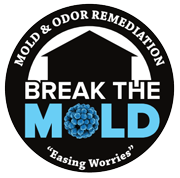Mold and Your Pets: How Fungal Spores Can Affect Your Furry Friends
Our pets are more than just animals; they are beloved members of our families. We go to great lengths to ensure their health and happiness, but one often overlooked danger in our homes is mold. While mold is widely known to affect human health, many pet owners are unaware that mold exposure can pose serious risks to their furry friends. In this blog, we’ll explore how mold can impact your pets and what you can do to keep them safe.
Understanding Mold and Its Dangers
Mold is a fungus. Many types thrive in damp, humid environments. It reproduces by releasing tiny spores into the air, which can quickly spread throughout the home. While some mold types are less threatening, others, like Stachybotrys (commonly known as black mold), can produce toxic substances that pose significant health risks. While we often associate mold with human respiratory issues, it’s important to recognize that pets can be equally, if not more, vulnerable to these harmful spores.
How Mold Affects Pets
Like humans, pets can suffer from various health issues due to mold exposure. Here are some of the most common ways mold can affect your furry companions:
- Respiratory Issues: Inhaling mold spores can lead to respiratory problems in pets. Symptoms may include coughing, sneezing, wheezing, and difficulty breathing. Pets with pre-existing respiratory conditions, such as asthma, are particularly at risk.
- Allergic Reactions: Pets can develop allergic reactions to mold, resulting in skin irritations, excessive scratching, and rashes. These allergic responses can make your pet uncomfortable and may lead to more severe skin infections if not treated promptly.
- Toxic Mold Exposure: Exposure to toxic molds like black mold can have severe consequences for pets. Symptoms of toxic mold exposure include lethargy, vomiting, diarrhea, tremors, and even organ damage. In extreme cases, it can be fatal if left untreated.
Signs Your Pet May Be Affected by Mold
Pets often exhibit subtle signs of illness, making it crucial for owners to be vigilant. If you notice any of the following symptoms, mold exposure could be the cause:
- Behavioral Changes: Unexplained lethargy, loss of appetite, or general malaise could indicate mold exposure.
- Physical Symptoms: Look out for sneezing, coughing, runny nose, watery eyes, or skin issues such as rashes or excessive scratching.
- Veterinary Diagnostics: If you suspect your pet has been exposed to mold, it’s essential to consult a veterinarian. They may perform tests, such as blood work or skin tests, to confirm mold exposure and recommend appropriate treatment.
Prevention and Protection Strategies
Preventing mold exposure in your home is the best way to protect your pets. Here are some strategies to consider:
- Regular Home Inspections: Conduct routine inspections for mold, especially in areas prone to dampness, such as basements, crawl spaces, kitchens, and, don’t forget, the attic spaces. Address any water leaks or moisture issues promptly to prevent mold growth.
- Air Quality Control: Maintaining good indoor air quality is crucial. Use dehumidifiers to reduce moisture levels, and consider investing in air purifiers with HEPA filters.
- Pet Safety Measures: Keep your pets away from areas that are prone to mold growth. If you discover mold in your home, ensure your pets are only exposed to the affected area once properly remediated.
What to Do If You Suspect Mold Exposure
If you suspect that your pet has been exposed to mold, it’s important to take immediate action:
-
- Immediate Actions: Remove your pet from the affected area to prevent further exposure. Clean their bedding and consider relocating them to a mold-free environment until the issue is resolved.
- Professional Mold Remediation: Mold remediation should be handled by professionals to ensure thorough removal. Professional services can assess the extent of the mold problem and take appropriate steps to eliminate it, protecting both your home and your pets.
- Consider Taking Your Pets to Your Local Veterinarian
Mold exposure is a serious concern for pet owners. Still, with awareness and preventive measures, you can safeguard your furry friends from the dangers of mold. Regular home inspections, maintaining good air quality, and prompt action if mold is discovered are key to ensuring your pets remain healthy and happy.
Take the first step in protecting your pets from mold exposure today. Contact Break the Mold for a professional mold inspection and remediation service. The Mold Guy is dedicated to creating a safe, mold-free environment for you and your beloved pets. Please don’t wait; schedule your inspection now and give your pets the safe homes they deserve.



